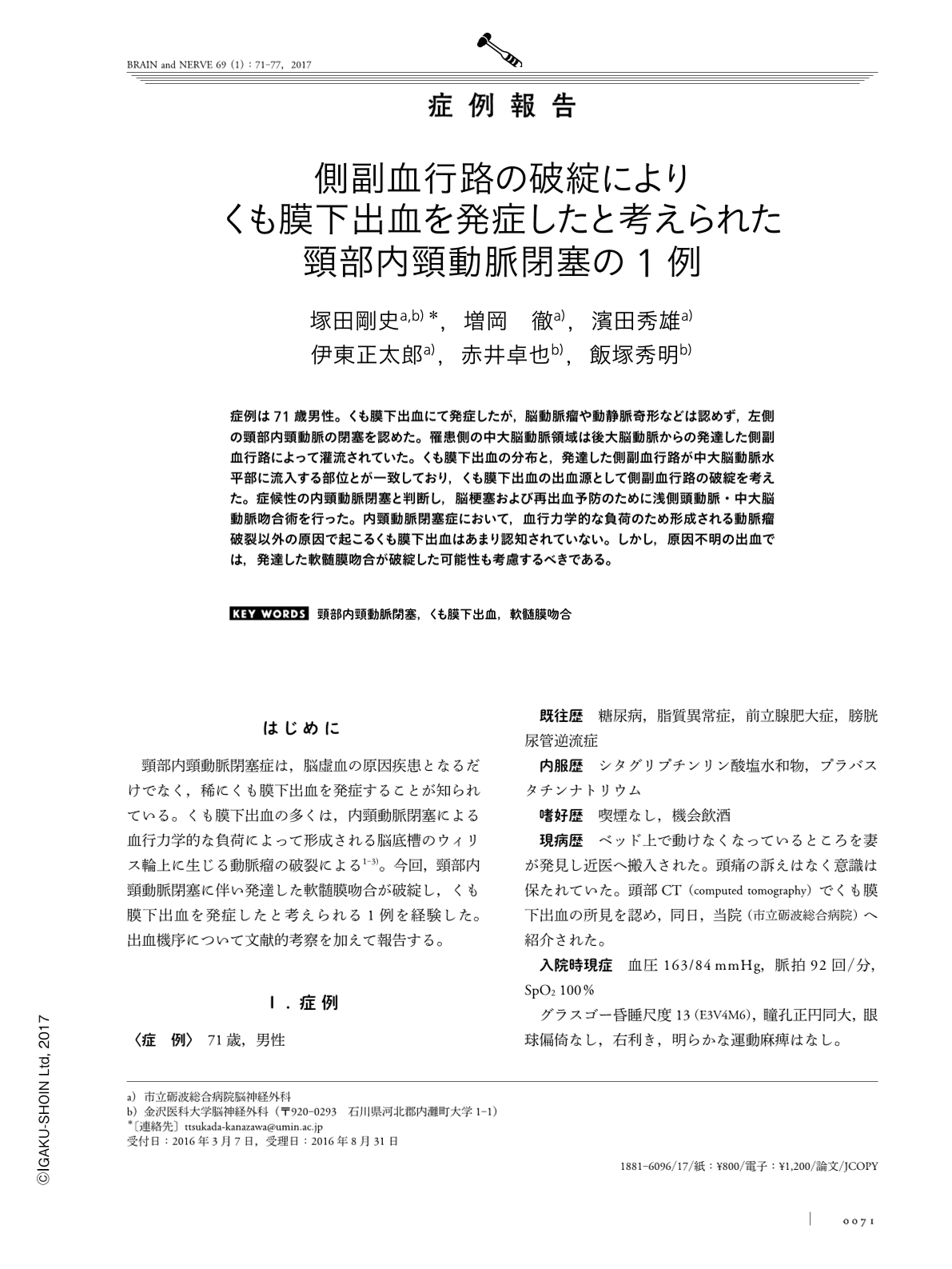Japanese
English
- 有料閲覧
- Abstract 文献概要
- 1ページ目 Look Inside
- 参考文献 Reference
症例は71歳男性。くも膜下出血にて発症したが,脳動脈瘤や動静脈奇形などは認めず,左側の頸部内頸動脈の閉塞を認めた。罹患側の中大脳動脈領域は後大脳動脈からの発達した側副血行路によって灌流されていた。くも膜下出血の分布と,発達した側副血行路が中大脳動脈水平部に流入する部位とが一致しており,くも膜下出血の出血源として側副血行路の破綻を考えた。症候性の内頸動脈閉塞と判断し,脳梗塞および再出血予防のために浅側頭動脈・中大脳動脈吻合術を行った。内頸動脈閉塞症において,血行力学的な負荷のため形成される動脈瘤破裂以外の原因で起こるくも膜下出血はあまり認知されていない。しかし,原因不明の出血では,発達した軟髄膜吻合が破綻した可能性も考慮するべきである。
Abstract
A 71-year-old man was admitted to our hospital with a diagnosis of subarachnoid hemorrhage (SAH). Angiographies revealed neither aneurysms nor vascular anomalies. However, these images elucidated the occlusion of the left cervical internal carotid artery as well as developed leptomeningeal anastomoses through the ipsilateral posterior cerebral artery, which resulted in blood perfusing the ipsilateral middle and anterior cerebral artery territories. Because the localization of SAH coincided with the developed leptomeningeal anastomosis, we speculated that the rupture of the developed leptomeningeal anastomosis in the basal cistern was the cause of SAH. We performed superficial temporal and middle cerebral artery bypass surgery to prevent rebleeding and ischemic stroke. In patients with occlusion of the internal carotid artery, SAH induced by the rupture of aneurysm formed by hemodynamic stress was recognized. However, rupture of developed leptomeningeal anastomosis should be considered as a possible cause of SAH of unknown origin.
(Received March 7, 2016; Accepted August 31, 2016; Published January 1, 2017)

Copyright © 2017, Igaku-Shoin Ltd. All rights reserved.


